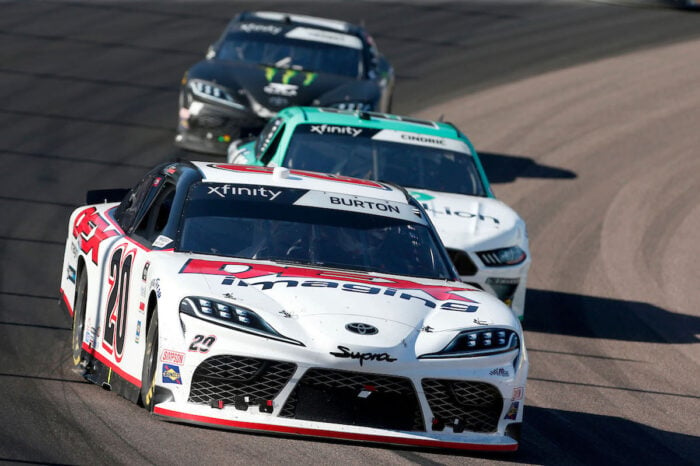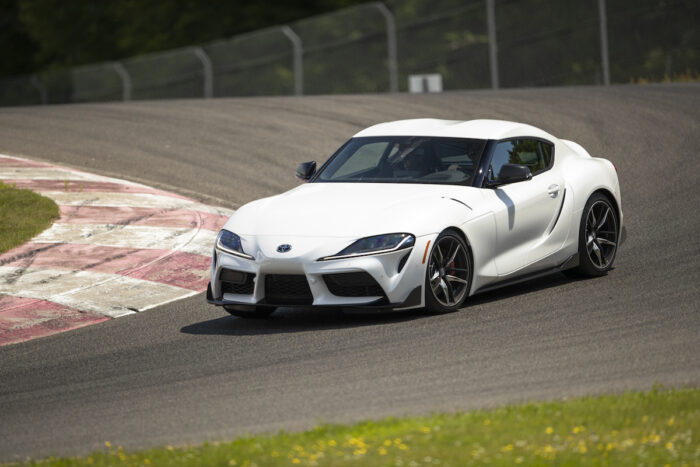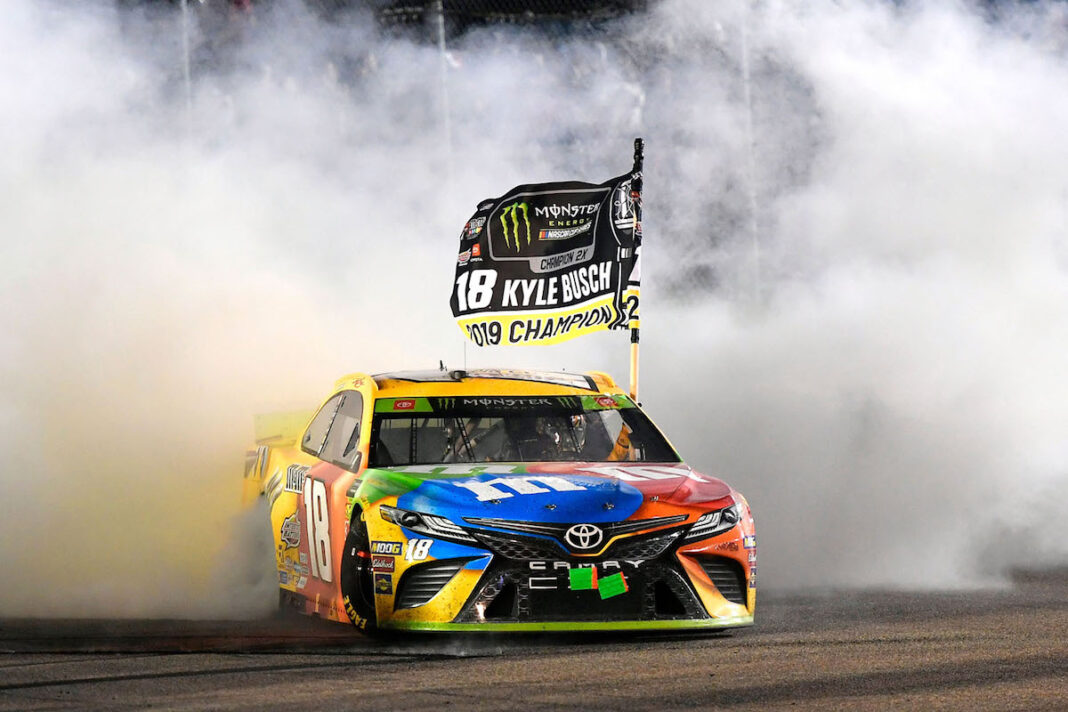Toyota shook up the US racing establishment when it joined the NASCAR party in 2004. The first Cup race win came at Atlanta in 2008 and in recent years, the Joe Gibbs Racing Camrys have been the cars to beat in NASCAR’s top tier.
But until the 2020 model year, you couldn’t buy a street-legal sports version of the big-selling sedan that, at the time of writing, was closing in on 150 NASCAR Cup victories. The Camry TRD fills that gap and brings Toyota Racing Development know-how to the street.
Toyota Camry TRD
We’re big fans of the Camry TRD here at tractionlife.com – check out our full review here. The eighth-generation car launched for the 2018 model year was already the best Camry we’d driven. Even in rental-car-spec, it’s a huge step up from what went before, but the TRD version does a great job of building on solid foundations.

The TRD exhaust adds some aural drama to the carryover V6, which puts out 301 HP. It’s a smooth and torquey unit when it gets going but we could use a little more immediacy in its response from the 8-speed automatic transmission, which is also unchanged from the more comfort-focused XSE.
A more successful carryover is the well-weighted steering. It loads up nicely with speed and provides enough feel to help you corner with confidence, even if we’re not sure that many Camry TRDs will see track use, post-lockdown. Elsewhere in the chassis, changes suit the car’s purpose – additional bracing, half-an-inch less ride height, increased roll stiffness (44% front, 67% rear), bigger brakes, and lighter, 19-inch wheels.

The result is flatter cornering and a firmer ride, but we still felt the Camry was comfortable enough to use every day, helped by the car’s supremely supportive, red-stitched seats. Other key Camry strengths remain, such as an excellent driving position, solid build quality, vast rear legroom, and generous trunk space.
The package of exterior changes (body kit, red brake calipers, eye-catching paint colours, rear wing) means that no one will mistake the TRD for a regular Camry, however. We were surprised by the amount of attention the car attracted during a week-long test, all of it positive, together with plenty of comments along the lines of, “That’s nothing like the Camry I used to have”. If boosting the Camry’s image among consumers was Toyota’s aim, it would surely succeed. That V8-powered NASCAR racer no longer seems quite as distant a relative – even if technically it has little more than its name in common with the street machine.
Toyota GR Supra
Of course, the Camry isn’t the only Toyota nameplate racing in NASCAR. Since 2019, the marque’s contender in the second-tier Xfinity Series has worn Supra bodywork.

When it first appeared, this fifth-generation Supra garnered a few negative comments from hardcore enthusiasts due to its high level of mechanical similarity to the BMW Z4. But let’s not kid ourselves: it’s likely that neither the Supra nor the Z4 would exist if development costs hadn’t been shared by the two companies. This reviewer for one is grateful for both and, judging by the wholehearted embrace of the GR Supra by tuning companies we witnessed at last year’s SEMA Show, the debate has already moved on.
If you prefer some big, beefy tires with your Supra, definitely check out this 2020 Supra 4×4 Concept.

The Supra’s styling is terrific in our eyes, sporty and curvy to a level that sadly couldn’t be matched in NASCAR due to limitations on body dimensions that are shared across all manufacturers in order to keep racing budgets down. But on the road, it looks fabulous.
During a brief test, we found that its driving performance matches up to the promise, too. The 3-litre, 335-HP straight-six turbo engine in the launch edition is not only powerful but flexible enough to make the Supra enjoyable at legal speeds, just like the Toyota 86 – itself developed in cooperation, this time with Subaru. Adaptive damping keeps the ride supple when you need it to be. A short wheelbase (2,470mm/97.2in – shorter than the 86’s) and well-judged steering (ratio 15:1) means the car responds immediately when you want to change direction.
On the track in Sport mode, we found the GR Supra to be wonderfully balanced. The car rotates on the throttle but doesn’t easily snap, which is just as it should be, and the exhaust provides an appealing soundtrack.

For the 2021 model year, the six-cylinder Supra will get a power boost to 382 HP and a lighter, 255-HP, four-cylinder model joins the range. Read more about the 2021 GR Supra here, including pricing information.
So, there we have it. Two Toyota sporting models with NASCAR connections, both with plenty to recommend them. If only we could drop the Supra’s turbo motor under the Camry’s hood to create a sleeper super-sedan, preferably with AWD. Now that would be something…


